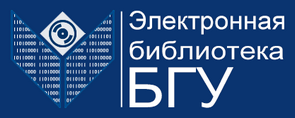Пожалуйста, используйте этот идентификатор, чтобы цитировать или ссылаться на этот документ:
https://elib.bsu.by/handle/123456789/271057| Title: | Экспериментальные методики ускорительного комплекса HVEE-500 |
| Other Titles: | The experimental techniques of acceleror-based facility HVEE-500 / Vladimir Chernysh, Alexander Evseev, Yuri Balakshin, Artyom Shporin, Damir Minnebaev, Anton Nazarov, Andrey Shemukhin |
| Authors: | Черныш, В. С. Евсеев, А. П. Балакшин, Ю. В. Шпорин, А. Д. Миннебаев, Д. К. Назаров, А. В. Шемухин, А. А. |
| Keywords: | ЭБ БГУ::ЕСТЕСТВЕННЫЕ И ТОЧНЫЕ НАУКИ::Физика |
| Issue Date: | 2021 |
| Publisher: | Минск : БГУ |
| Citation: | Взаимодействие излучений с твердым телом : материалы 14-й Междунар. конф., посвящ. 100-летию Белорус. гос. ун-та, Минск, Беларусь, 21-24 сент. 2021 г. / Белорус. гос. ун-т ; редкол.: В. В. Углов (гл. ред.) [и др.]. – Минск : БГУ, 2021. – С. 603-606. |
| Abstract: | Представлено описание возможностей экспериментального комплекса HVEE-500 НИИЯФ МГУ, позволяющего проводить направленное модифицирование и исследования поверхностей и тонких пленок. Ускорительный комплекс оснащен четырьмя экспериментальными трактами, которые позволяют создавать, модифицировать и исследовать объекты нанометрового масштаба за счет эффектов распыления мишени, имплантации ионов, обратного рассеяния. Представлены описание и технические параметры экспериментальных трактов, в том числе предназначенного для проведения in situ ионной имплантации и спектрометрии Резерфордовского обратного рассеяния. Показаны возможности комплекса в задачах инженерии дефектов за счет облучения ионами благородных газов в наноструктурированных материалах на примере углеродных нанотрубок и пористого кремния |
| Abstract (in another language): | A description of the capabilities of the experimental complex HVEE-500 of the Institute of Nuclear Physics of the Moscow State University, which makes it possible to carry out directed modification and study of surfaces and thin films, is presented. The accelerating complex is equipped with four experimental beamlines that allow one to create, modify and study nanoscale objects due to the effects of target sputtering, ion implantation, and backscattering ion detection. The description and technical parameters of experimental channels, including those intended for in situ ion implantation and Rutherford backscattering spectrometry, are presented. Special features of the facility are listed, such as the ability to obtain ions in a wide range of masses (up to 250 amu), high stability of the ion source and high voltage supply, target temperature regimes and several others, the prospects of their implementation in upcoming investigations are mentioned. The advantages of using ion-beam techniques are discussed in comparison to other methods of thin films investigation and modification of nanomaterials. The capabilities of the accelerator complex in the problems of engineering defects in nanostructured materials are shown, based on experiments with carbon nanotubes and porous silicon. It was demonstrated, that the structure and physical properties (wettability, paramagnetism) depend strongly on irradiation fluence with noble gases ions |
| Description: | Секция 6. Современное оборудование и технологии = Section 6. Advances in equipment and technologies |
| URI: | https://elib.bsu.by/handle/123456789/271057 |
| ISSN: | 2663-9939 (Print) 2706-9060 (Online) |
| Appears in Collections: | 2021. Взаимодействие излучений с твердым телом |
Files in This Item:
| File | Description | Size | Format | |
|---|---|---|---|---|
| 603-606.pdf | 317,59 kB | Adobe PDF | View/Open |
Items in DSpace are protected by copyright, with all rights reserved, unless otherwise indicated.

